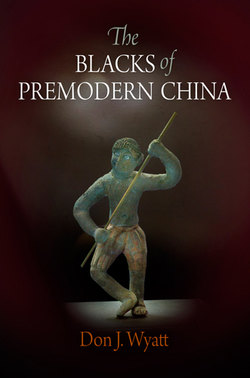The Blacks of Premodern China

Реклама. ООО «ЛитРес», ИНН: 7719571260.
Оглавление
Don J. Wyatt. The Blacks of Premodern China
Отрывок из книги
The Blacks of Premodern China
Victor H. Mair, Series Editor
.....
If the first of all Chinese references to a black man or black people is to be found almost incidentally in the somewhat obscure portion of a major philosophical work, then we should perhaps not be surprised to find the second reference surface, with nearly equal happenstance, in one of the most significant mythological writings in the Chinese cultural heritage. Interestingly, this second reference succeeds the first by a maximum of only a couple of centuries, for it appears in the earliest and most celebrated of China’s geocosmological topographies, the anonymously written Classic of Mountains and Seas (Shanhaijing),38 which was “compiled no later than the beginning of the first century B.C.E..”39 In this protean but peculiar work, which the translator Anne Birrell has described as having “less to do with geography than with cosmology and mythogeography,”40 within its eighteenth and final taxonomic book, “The Classic of Regions within the Seas” (“Haineijing”),41 we find the fleeting mention of the following: “There are also the black people. They have the heads of tigers and the feet of birds. Clutching a snake in either of their two hands, they are constantly chewing on them.”42
Like many of the Chinese writings dating from the beginning of the imperial age or earlier, the anonymously compiled Classic of Mountains and Seas possibly evolved over several centuries before achieving its present form. For this succinct reference to black people and for other reasons we must regard the emergence of this work as a noteworthy development in several ways. As the historian Richard J. Smith points out, as a text the Classic of Mountains and Seas is clearly the product of a wide range of disparate historical, mythological, and divinatory sources, “including, perhaps, Greek, Middle Eastern, and Indian legends.”43 It is also significant to our inquiry because it represents “the earliest known illustrated account of barbarians in China,”44 though its status in this regard is problematized by our not knowing whether oldest editions contained illustrations or, if they did, whether the illustrations preceded and were in fact the genesis for the written text we now possess. Recognizing the age-old Chinese penchant for recording the fantastic as well as realistic descriptions of foreign peoples, of greatest importance to our concerns is Smith’s observation that the freakishly “barbarian” peoples cataloged in the pages of the Classic of Mountains and Seas are meant at least occasionally to identify “actual culture groups.”45 Indeed, several of the tribes of man-creatures featured in the Classic of Mountains and Seas may well correspond to real peoples, whereas many more may not. The seminal question for our purposes, to be sure, is what to make of the community of semibestial individuals that it only once refers to as black. We perhaps find an answer in a curious adumbration of the instance just discussed.
.....